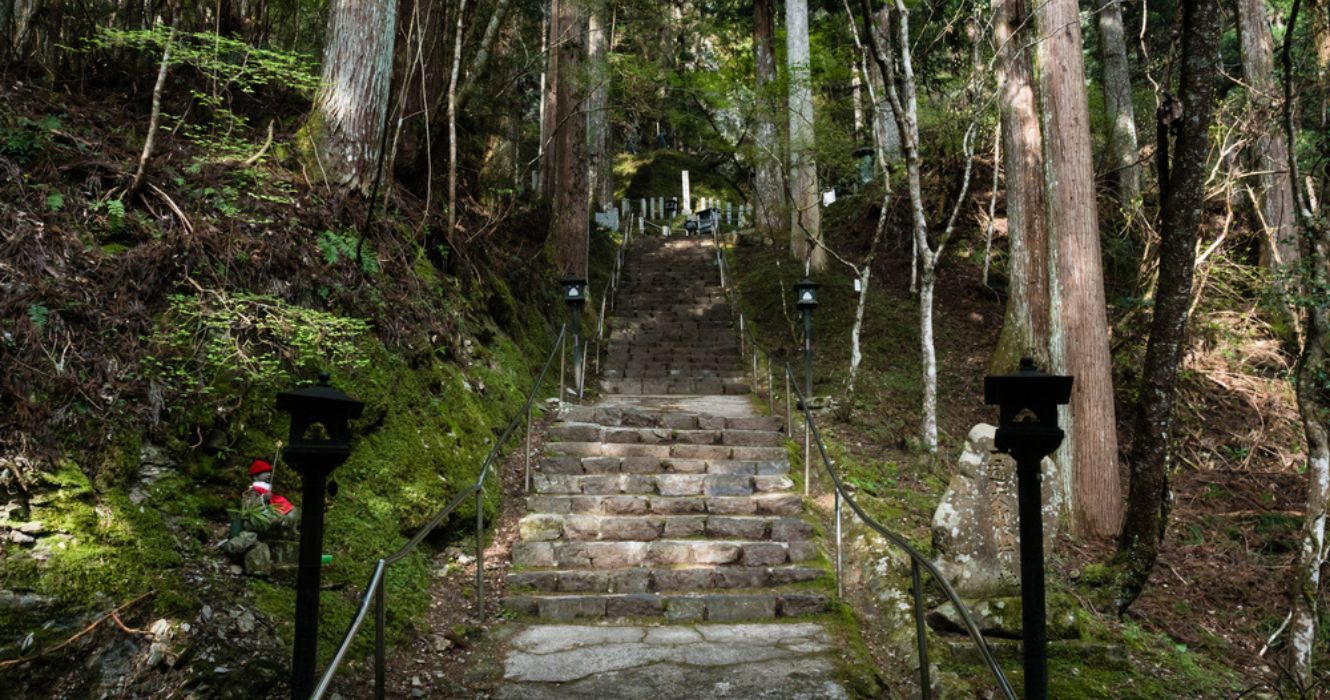Quick Links
Japan always has something intriguing and unique about it that makes it a special vacation destination worth exploring. Of course, Japanese culture is rich and fascinating, and is reason enough to quickly book a ticket. But it’s not just the intriguing culture. Whether it's the vending machines that sell, wait for this, underwear, Japan has things that one may not see anywhere else. Of course, the east Asian country is also known for its amazing landscape, several soothing hot springs, and world-famous Onsens and Ryocans. For any visitor, the latter is particularly a perfect way to immerse oneself in the Japanese lifestyle.
And for hiking enthusiasts, Shikoku Island, one of the four main islands that make up Japan, for its awe-inspiring landscapes, may make one think they're walking somewhere in Glacier National Park. In this article, we reveal what makes Shikoku Island such a rock-star destination, and why its hiking is all the rage.
Here’s Why Shikoku Island Makes For An Amazing Destination
For clarity, Shikoku, the smallest of Japan’s four main islands, is made up of four prefectures. These include Tokushima, Kagawa, Ehime, and Kochi. Visitors will be blown away by the wild, untamed landscape that defines the eastern side of Shikoku Island.
This is an area that comprises the two prefectures of Tokushima and Kagawa. The scenery here is charmingly rural and rustic with districts and streets that go back several centuries.
For instance, even for seasoned travelers, the wild beauty of Iya Valley, its lush greenery and forested terrain, is the stuff of dreams. While there are many highlights one can sing about in this part of Shikoku Island, the vine bridges of Iya easily take the crown.
Of course, the seclusion and quietness of the village across which the vine bridges run—is charmingly appealing in itself. Iya Kazurabashi, the best and most famous, is suspended 14 meters above the river—and for a distance of 45 meters.
One’s heart will not stop while walking this swaying bridge (and the two others in this area), but it will definitely miss several beats. Another exciting draw in this area is the Monkey Bridge, a suspended box-like structure where one has to literally pull herself to cross the river.
And surrounded by glistening waterfalls and rugged rocks, the scenery around this place is breathtaking. Nearby, is the village of Nagoro, whose scarecrows look like a scene from a Harry Potter movie.
After this, the terraced village of Ochiai, with farmhouses that cling to the mountainside at a vertical elevation of nearly 400 meters, is a sight a visitor will want to gaze at forever.
And if these are not enough proof that Shikoku Island is worth visiting, then wait to learn about the Shikoku Pilgrimage, one of Japan’s best-known walks.
Here’s Why Shikoku Pilgrimage Is A Hiker’s Dream Adventure
Snaking its way through the scenic coastline of Shikoku Island, the Shikoku Pilgrimage is a surreal adventure that blends culture, history, and amazing natural beauty—all in one experience.
While many trails of this famous hike go through busy roads, the trails that zigzag through the mountains are what any hiker will sign up for.
Hikers will particularly enjoy walking the Shikkoku no Michi Trail, an amazing path that takes hikers through the famous Kumai Tunnel, a 100-year-old marvel that doesn’t have lights, cars, and just about anything else.
This region is home to some of the highest mountains in Western Japan, picturesque villages, and dramatic gorges. But the adventure also involves stops at 88 odd temples, one of the highlights of the trip.
One of the reasons Shikoku Pilgrimage is unique is that it’s among the few circular-shaped pilgrimages in the world. This hike is also famous because of its association with Kōbō Daishi, a Buddhist priest regarded as the founder of one of the most influential schools of Japanese Buddhism.
According to tradition, Kōbō Daishi is believed to have spent time in these temples in the 9th century AD. Today, it’s believed that walking the Shikoku Pilgrimage will spark a spiritual reawakening that will change one’s life for the better.
- How Long Is The Shikoku Pilgrimage Route? The Shikoku Pilgrimage Route is 1,200 kilometers long.
Planning To Hike The Shikoku Pilgrimage? Here’s What To Know
The Shikoku Pilgrimage Route is long and, if traveled on foot, can take up to 60 days. Hikers with not enough time—and not enough strength—may want to take a small section of the route such as the Shikkoku no Michi Trail.
Today, however, aside from going on foot, visitors have other options for exploring the famous hiking trail including cars, buses, and taxis.
For the best time to visit, most travelers prefer the shoulder seasons to escape the summer heat and winter cold.
But whatever time one will visit, the amazing scenes and 88 temples will just be right there, desiring to be seen, unmindful of the season.

